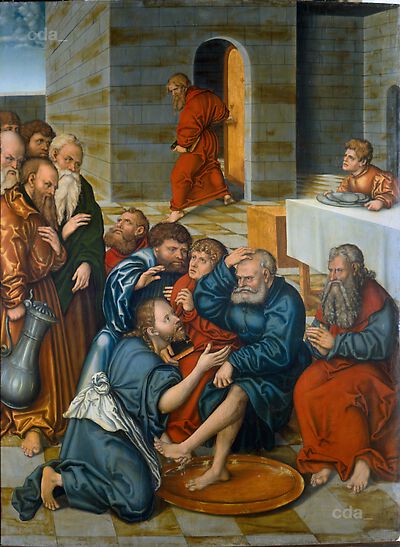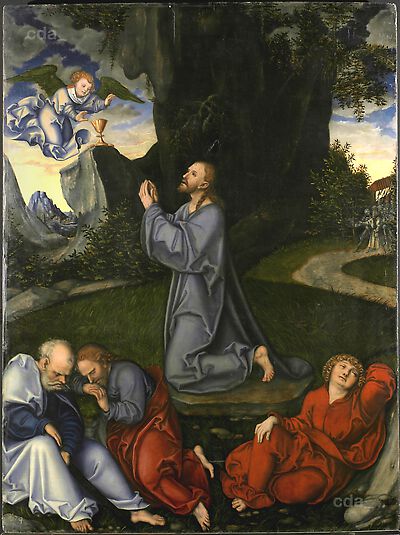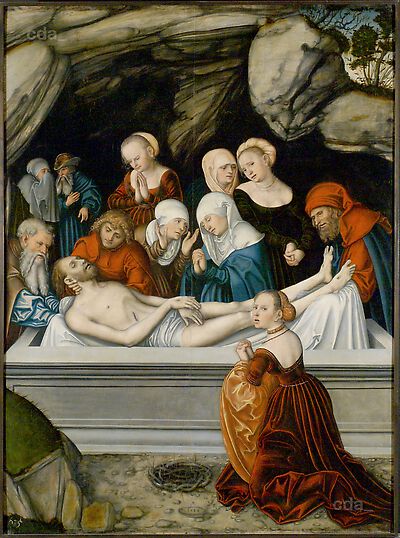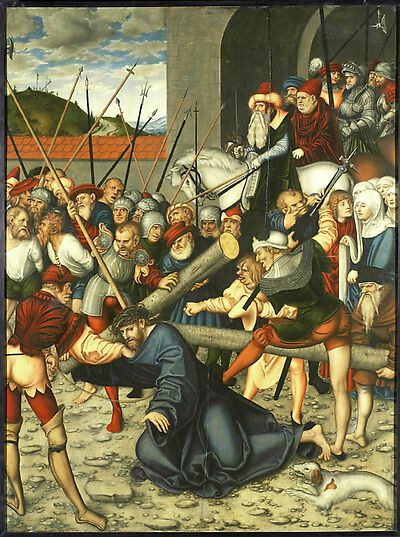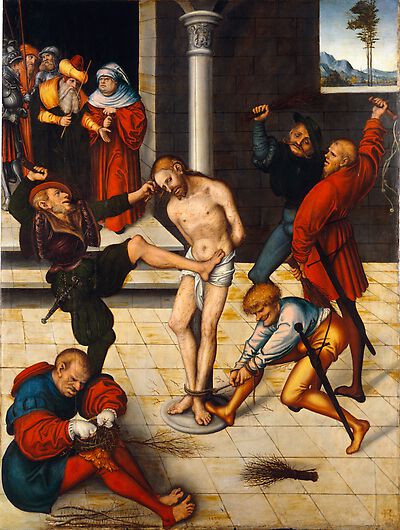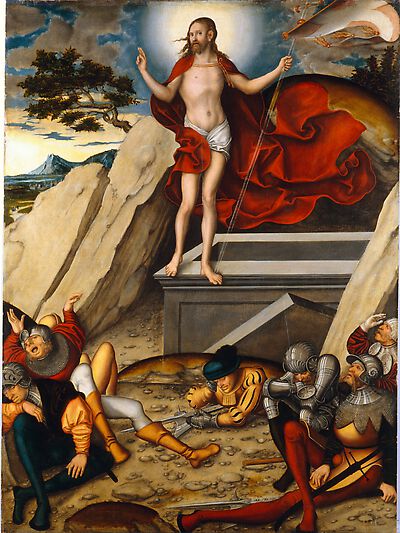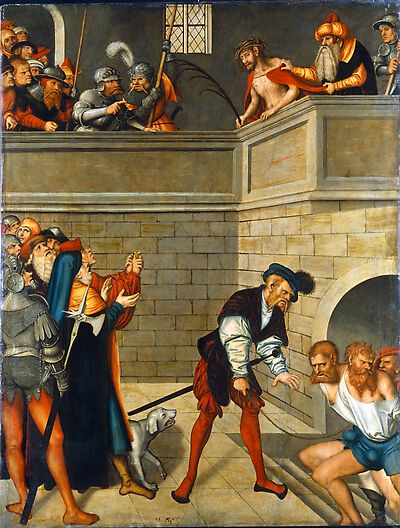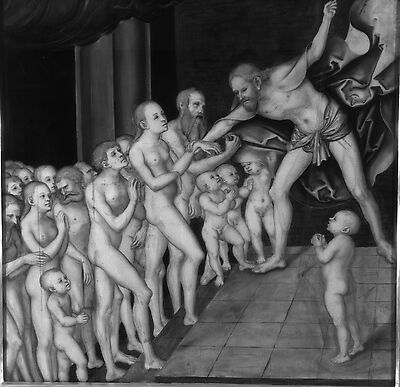The decent of Christ into a subterranean limbo to liberate the innocent children and the 'just' in accordance with the laws of the old covenant is not mentioned in the bible, but rather in medieval apocryphal writing. A dark smoke cloud in the shape of animal-like devilish figures dissipates above
The decent of Christ into a subterranean limbo to liberate the innocent children and the 'just' in accordance with the laws of the old covenant is not mentioned in the bible, but rather in medieval apocryphal writing. A dark smoke cloud in the shape of animal-like devilish figures dissipates above those waiting for salvation. Christ stands on the top ledge of the painting wearing a red cloak and carrying the banner of the cross. Grabbing onto Eve's wrist he pulls her up. The bearded man beside her, who can be identified as Adam, tugs on his red cloak. Around Christ the redeemed souls join their hands in prayer.
[see Elke a. Werner, Exhib. Cat. Berlin 2009, 217-219, No. IV.21]
- Attribution
- Lucas Cranach the Elder
Attribution
| Lucas Cranach the Elder | [Stiftung Preußische Schlösser und Gärten, Berlin - Brandenburg, revised 2011] |
- Production date
- 1538
Production date
| 1538 | [dated] |
- Dimensions
- Dimensions of support: 151.2 x 116.2 cm
Dimensions
Dimensions of support: 151.2 x 116.2 cm
[Stiftung Preußische Schlösser und Gärten, Berlin - Brandenburg, revised 2011]
- Signature / Dating
Artist's insignia at the lower edge: winged serpent (with dropped wings) and date '1538'
Signature / Dating
Artist's insignia at the lower edge: winged serpent (with dropped wings) and date '1538'
- Owner
- Stiftung Preussische Schlösser und Gärten Berlin-Brandenburg
- Repository
- Grunewald hunting lodge
- Location
- Grunewald
- CDA ID
- DE_SPSG_GKI2271
- FR (1978) Nr.
- FR374
- Persistent Link
- https://lucascranach.org/en/DE_SPSG_GKI2271/

